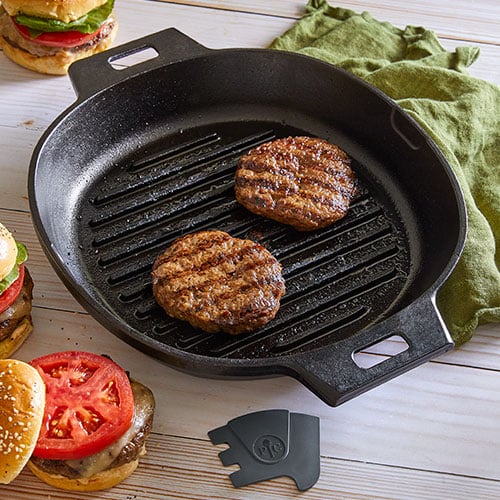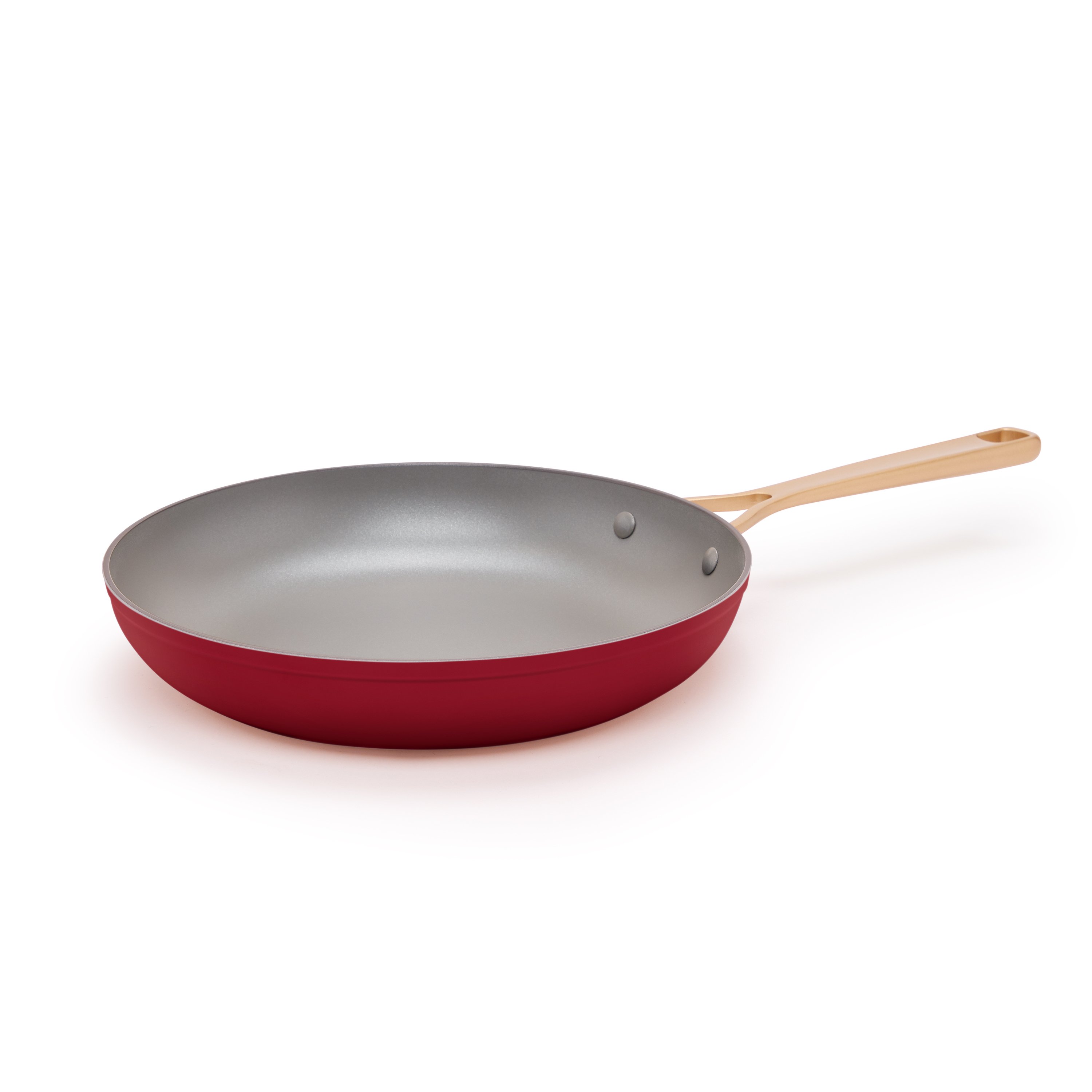Master the Art of Food Preparation With a Skillet: a Newbie's Guide
Master the Art of Food Preparation With a Skillet: a Novice's Overview is an extensive source for individuals excited to boost their culinary skills making use of a versatile cooking area device - the skillet. This newbie's guide uses a step-by-step method to help novices browse the world of skillet food preparation with confidence and skill. From picking the ideal skillet to understanding essential techniques and heat control, this guide covers all the fundamentals needed to become a knowledgeable skillet cook. In addition, it gives valuable insights on appropriate skillet maintenance and uses a collection of scrumptious dishes that display the frying pan's possibility. Whether you are a food preparation enthusiast or a beginner in the cooking area, this overview will certainly outfit you with the knowledge and skills to boost your cooking abilities with the reliable frying pan.
Selecting the Right Frying Pan
Selecting the right skillet is crucial for understanding the art of food preparation with this flexible kitchen device. With so several options available on the market, it can be overwhelming to make the appropriate selection. However, recognizing the crucial elements to consider can simplify the decision-making procedure.
Cast iron frying pans are understood for their outstanding warm retention and longevity, while stainless steel frying pans supply even warm circulation and are simple to keep. Non-stick skillets are terrific for low-fat cooking and easy cleaning.
It is advised to choose a skillet that matches the size of your stovetop burner. A skillet that is as well little might result in congestion, while a frying pan that is also large can lead to uneven cooking.
Lastly, deal with style and warm resistance must additionally be taken into consideration. A skillet with a comfortable and long handle allows for easy maneuverability and decreases the danger of burns. Furthermore, the deal with must be heat-resistant to make sure risk-free handling during cooking.
Necessary Frying Pan Strategies
To genuinely understand the art of food preparation with a frying pan, it is important to find out an array of strategies that will certainly boost your cooking abilities to brand-new heights. While the skillet is a flexible and vital device in the cooking area, understanding and understanding these strategies will certainly enable you to create a variety of scrumptious meals effortlessly.
One necessary method is sautéing, which entails food preparation food swiftly in a little quantity of warm oil or fat. This approach is ideal for cooking vegetables, meat, or fish and shellfish, as it assists to keep their all-natural tastes and textures.
An additional essential technique is hot, which involves food preparation food over high warm to create a browned and savory outside. This is usually done with meats, such as steak or hen, to create a caramelized crust while maintaining the indoor moist and tender.
Deglazing is additionally a beneficial method that includes adding fluid, such as broth or red wine, to the frying pan after cooking meat - skillet guide. This helps to develop a tasty sauce by loosening and including the browned bits stuck to all-time low of the skillet
Finally, stir-frying is a prominent strategy that entails swiftly cooking small items of food over high heat while continuously mixing. This method is frequently used in Oriental food and permits a quick and flavorful meal.

Understanding Warmth Control
When food preparation with a skillet,Understanding heat control is critical for accomplishing optimal results. The capacity to control the temperature level and manipulate permits you to cook different ingredients to perfection. Recognizing heat control not just prevents your food from shedding or undercooking, however it additionally enhances flavors and appearances.
To start, it is necessary to pre-heat your frying pan properly. This step guarantees even warmth circulation throughout the frying pan, permitting food to prepare equally. Once preheated, you can adjust the heat level according to your recipe's requirements. Lower warm is optimal for fragile foods that need mild food preparation, such as fish or eggs. Greater warm appropriates for scorching meats or achieving a crispy crust on vegetables.
Preserving the preferred temperature during cooking is equally important. Readjusting the warm as well frequently can affect the food preparation procedure. It is best to begin with medium heat and make tiny changes as required. If you observe your food cooking as well rapidly, decrease the heat slightly. Conversely, if your food is taking also lengthy to cook, increase the warmth slowly.
Lastly, be conscious of the heat retention residential properties of your frying pan. Cast iron skillets, for instance, keep heat well and need lower warm settings contrasted to stainless steel or non-stick frying pans. By understanding your frying pan's heat conductivity, you can much better control the food preparation procedure and accomplish regular results.
Taking Care Of Your Skillet
Correct maintenance is crucial to preserving the durability and efficiency of your skillet. Taking care of your frying pan involves a couple of simple yet essential actions that linked here will ensure it continues to be in outstanding problem for years to come.

Second of all, it is recommended to season your frying pan on a regular basis. Seasoning includes using a thin layer of oil to the skillet's surface area and home heating it up until it polymerizes, developing a natural non-stick finish. This procedure enhances the skillet's efficiency and prevents food from sticking.
Moreover, saving your skillet correctly is necessary. To stay clear of scratching or damaging the surface area, put a paper towel or fabric in between each frying pan if you pile them. It is also a good idea to save your frying pan in a completely dry area to avoid wetness and corrosion development.
Lastly, keep in mind to regularly check your frying pan for any kind of signs of wear or damage - skillet guide. If you see any kind of issues, address them quickly to stop more degeneration.
Delicious Skillet Recipes
For those looking to broaden their culinary repertoire, the skillet supplies a variety of tasty dish alternatives. The flexibility of this cooking area tool allows for a variety of food preparation methods, from browning and burning to sautéing and simmering. Whether you favor meat, seafood, vegetables, or grains, there are many skillet view it dishes that will certainly please also one of the most critical taste.
One classic frying pan recipe is the seared steak. By preheating the frying pan and including a touch of oil, you can attain a flawlessly caramelized crust outside while keeping the meat tender and juicy on the inside. Combine it with a side of sautéed vegetables or a creamy mushroom sauce for a full and hearty meal.
If you're in the state of mind for fish and shellfish, a skillet dish like lemon garlic shrimp is both delicious and fast. With just a couple of basic active ingredients like fresh shrimp, diced garlic, lemon juice, and butter, you can create a delicious dish that can be delighted in by itself or served over pasta or rice.
For vegetarians, a skillet recipe like ratatouille is a great selection. This conventional French dish features an assortment of vibrant veggies such as eggplant, zucchini, bell peppers, and tomatoes, cooked with each other with flavors and natural herbs to produce an unified blend of tastes.
Conclusion
To conclude, mastering the art of food preparation with a skillet requires selecting the right skillet, finding out necessary methods, mastering warm control, and caring for the skillet appropriately. By complying with these actions, beginners can end up being skilled in making use of a skillet for numerous scrumptious recipes.
Master the Art of Cooking With a Frying Pan: a Beginner's Guide is a thorough resource for individuals excited to improve their culinary skills utilizing a flexible cooking area tool - the frying pan. From picking the appropriate skillet to mastering find this necessary techniques and warm control, this overview covers all the principles essential to become a knowledgeable skillet chef. Furthermore, it offers useful insights on appropriate frying pan upkeep and uses a collection of scrumptious dishes that display the skillet's potential. Cast iron skillets are recognized for their excellent heat retention and longevity, while stainless steel frying pans use also warm circulation and are very easy to keep. A frying pan that is as well little may result in congestion, while a frying pan that is as well big can lead to unequal cooking.